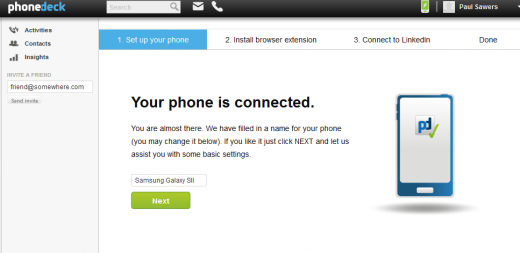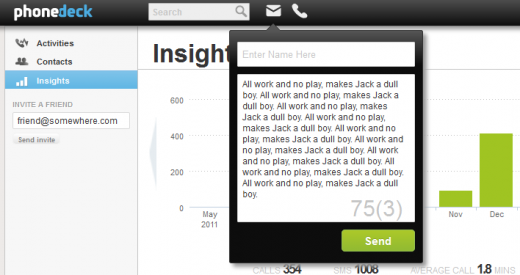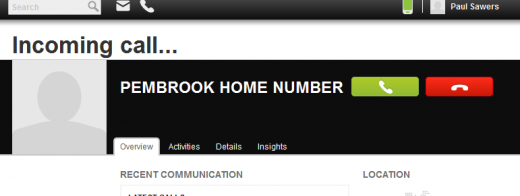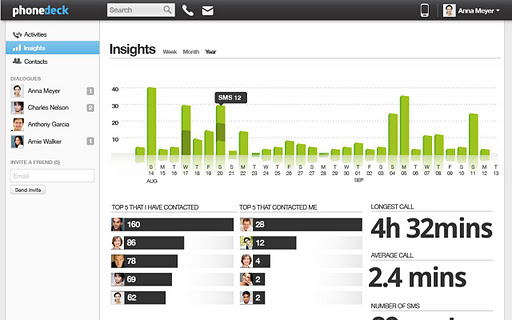
Phonedeck launched in private beta late last year, and in the invitation-only period it has managed to bring on board 50,000 users globally through word-of-mouth. The cloud-based mobile phone management platform has taken on board all the feedback over the past four months, and is rolling out to the public today.
Phonedeck offers a centralized repository to let you store all of your phone contacts, manage SMS activity, monitor usage statistics and more, all from your (computer) browser. Once you register for an account through its website, you install the Phonedeck Android app on your mobile device, log-in through the app and begin syncing your smartphone to your online account.

You can also choose to integrate your LinkedIn connections, something that I omitted to do here because, well, it seemed to be extraneous to what this app professed to be all about. But I’m sure some folk will like this option. It also gives you the option of syncing with any number of Gmail accounts associated with your handset, as well as the default phonebook.
If you spend much of your day glued to your computer screen, Phonedeck lets you send SMS messages AND make calls from your browser, all of which are sent as though they’re coming from your mobile phone. This also means you can type text messages on a fully-fledged keyboard. Whilst you do have the standard 160-characters-per-text allowance to play with, it won’t restrict you for each message and will simply add up the number of messages you’re sending.

Not only can you send texts and make telephone calls, but you can also receive your messages and incoming calls direct to your browser, if you’re logged-in.
For Chrome users, there’s a browser extension which will show desktop notifications on incoming calls and SMS, allowing users to answer and reject calls. This runs continually in the background, even with the browser closed.


This ‘auto-curation’ of phone contacts ensures that listed numbers, email addresses, profile pictures and other contact information are always up-to-date, and there are plans in place to add further integrations from other social networking services shortly.
Phonedeck is headquartered in Berlin, Germany, and was founded in 2010 by CEO Dr. Frank Fitzek, COO Gerrit Schulte, Head of Business Development Jens-Philipp Klein and chairman Christophe Maire, who is also an investor in the company.
“The idea for Phonedeck was born out of a vision of combining the strengths of two devices many people in business use every day; the portability and connectivity of mobile phones and the relative large screens and keyboards of personal computers,” says Fitzek. “After our successful invitational phase we had reels of invaluable feedback that have helped shape the platform into what it has become today. Now that we have such a stable framework in place, we’re looking forward to sharing the many new features planned for the platform in the near future.”
An adapted version of Phonedeck is also available as an S40 application for Nokia feature phones, which we’re told is enjoying considerable pick-up in the Asian market in particular.
For the timebeing, however, Phonedeck is only available on Android in the smartphone sphere, but we’re told it will be launching on other mobile devices shortly.
Phonedeck really is a neat tool for syncing and centralizing all your mobile phone activity, and we’re sure this one will enjoy significant uptake when it goes public today. Check out its new promo video below:
Get the TNW newsletter
Get the most important tech news in your inbox each week.





